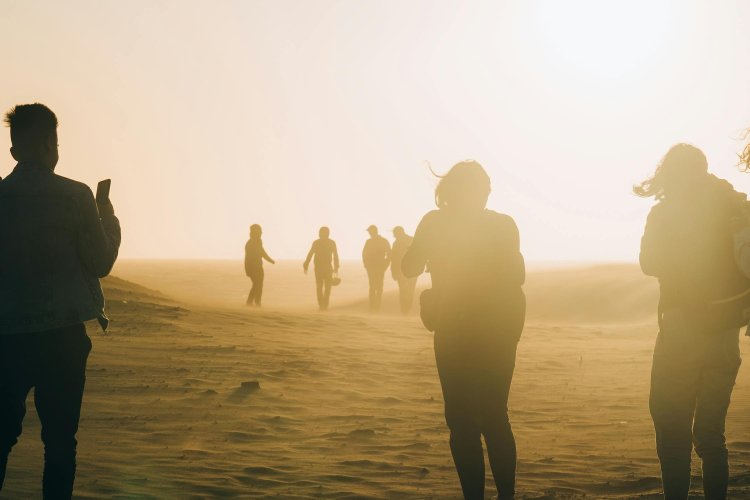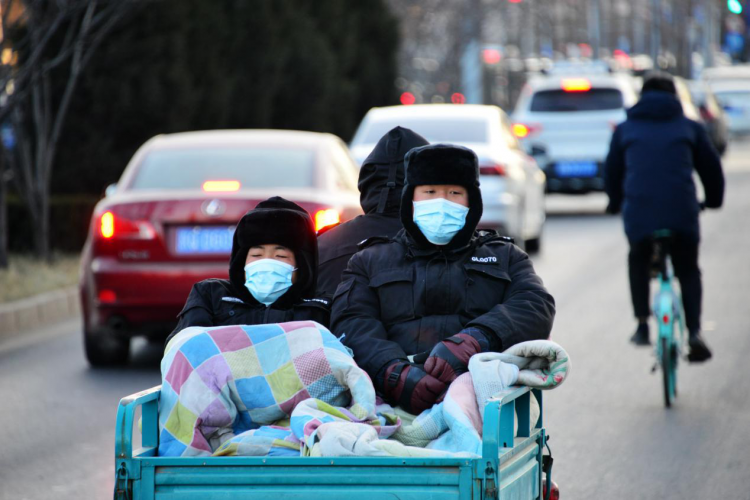Beicology: The Why, How, and So What of BJ's Early Winter
Brrrr! It’s cold out there! With a sudden drop in temperature over the last few days that has cruelly cut the city’s already short fall season even shorter, winter has officially arrived in Beijing. But why have temperatures fallen so fast? How unusual is this for Beijing? What can you do to combat the winter cold? And, perhaps most importantly, will the heating also come on early this year?
Beijing Enters an Early Winter
Temperatures in and around the capital plummeted recently, reaching an average high of the low to mid-teens compared to highs in the low twenties in previous days. Daytime temps will now likely stay solidly in the teens for the next month or so, and nighttime temps are now reliably in the single digits, flirting with freezing but mostly expected to stay a few degrees above until mid-November.

According to the National Meteorological Center (NMC) of the China Meteorological Association (CMA), a strong cold front from the north has significantly lowered temperatures across the region. Beijing's daily average temperatures are expected to remain below 10 degrees Celsius for seven consecutive days from Oct 18 to Oct 24. This, along with other meteorological measurements, indicates that winter may have already started in Beijing, as of Oct 18.

In the period from 1991 to 2020, the average winter start date for Beijing was October 31; the Oct 18 estimated start date of winter this year means that winter has begun about two weeks early. This is not, however, completely out of the ordinary. Other early winter dates for Beijing include Oct 16 in 2021, Oct 17 in 1964 and 1986, and another Oct 18 in 2002.
What’s the Cause?
The recent sudden shift in weather is likely due to the combination of several weather-related phenomena. According to Renmingwang (People's Daily), the following are some of the probable contributing factors:
- The Arctic Vortex splits southward: The Arctic Vortex is a powerful cold low-pressure system that surrounds the Arctic region, typically trapping polar cold air in high latitude areas. But in October of this year, due to the sudden warming of the stratosphere, the Arctic vortex experienced abnormal splitting and instability, leading to a large-scale southward “leakage” of cold air. This abnormal circulation causes frequent cold waves to hit mid-latitude regions (including northern China), forming a “cliff-like” cooling effect.
- Siberian high pressure is unusually enhanced: As a “cold storage” for the winter of the Asian continent, Siberian high pressure is strengthened ahead of schedule and is unusually active this year. Since October, the high-pressure system has continued to accumulate cold air, creating a strong air pressure gradient. When the high-pressure system goes south, the cold air pours out in an explosion, causing a severe cooling of the northern part of China.
- Favorable access to cold air: The northern part of China has an open land area, which lacks large mountains heading east-west. Cold air from Siberia was able to enter directly along three main paths: the northwest path, which moved eastward through Xinjiang and the Hexi Corridor; a medium road directly south from the Mongolian plateau; And the east road that invaded from the northeastern plain.
- Potential impact of La Niña: At present, sea surface temperatures in the equatorial Middle East and the Pacific Ocean continue to be low, characterizing the development of La Niña. Although La Niña has not formed completely at present, its modulating effect on the general atmospheric circulation may have begun to appear, which intensifies the cold air activities to some extent.
- Arctic amplification effect: Polar warming causes the polar vortex to weaken or distort, and cold air is more likely to invade the mid-latitudes southward. Thus, despite the overall global warming, extreme cold wave events are likely to intensify, creating “cold abnormalities in a warmer context.”
Winter Weather Nationwide
Beijing is, of course, not the only place in the country experiencing this winter weather. Northern areas such as Inner Mongolia, Heilongjiang and Jilin have already experienced significant snowfall. Reports are that some outlying districts of Beijing may also be able to expect some snow.
As the cold air from the north moves south over the next few days, much of the southern part of the country, which has witnessed recent rainy weather, will remain rainy, and temperatures will continue to fall, bringing frost to some western areas. With frequent rainfall, parts of the south will be susceptible to secondary natural disasters, such as flash floods and landslides, that may be triggered by persistent or locally heavy rainfall.


Does an Early Winter Mean Early Heating?
We are still almost a month away from the legal heating period in Beijing, which runs from Nov 15 to March 15. If the average temperature in the city is below 5 degrees Celsius for five consecutive days, then city officials will decide whether to start the heating early. So, in short, we'll just have to wait and see...
Does an Early Winter Mean an Extra-Cold Winter?
No. Whether or not a winter comes “early” and whether or not a winter is markedly colder than normal are two separate questions, and the two concepts are not necessarily linked.
Early or late onset of winter reflects temperature changes around the time of seasonal transition, whereas the identification of a “cold” winter looks at whether the average temperature over the whole winter season is markedly lower than usual.
There have been times when a winter that arrived early turned out to be relatively warm in the context of historical data and, conversely, times when a winter that arrived late brought with it exceptionally low temperatures.
It remains to be seen whether this year’s winter season will be warm, cold, or about average.
Beijing Winter Weather Tips
It goes without saying that as the weather cools and winter temperatures intensify, we should all be layering well. Additionally, Beijing winters bring with them not only cold temperatures but also strong winds and dry, unforgiving air, so in addition to wearing warm layers and protecting against the wind, we must also remember to moisturize and stay hydrated with water and lots of warm beverages.

Public health bodies also advise that people with cardiovascular and cerebrovascular diseases or respiratory diseases should pay special attention to keeping warm during this period of cooling weather and avoid going out in the morning and evening. It is also recommended to wear a mask when going out, which can help both with keeping warm and filtering pathogens. Any people with underlying health issues should, as always, follow their doctor's advice, keep warm and ... keep calm!
READ: Embrace Pumpkin and Squash Season With These Recipes
Images: Unsplash, Beijing Meteorological Service, National Meteorological Center







